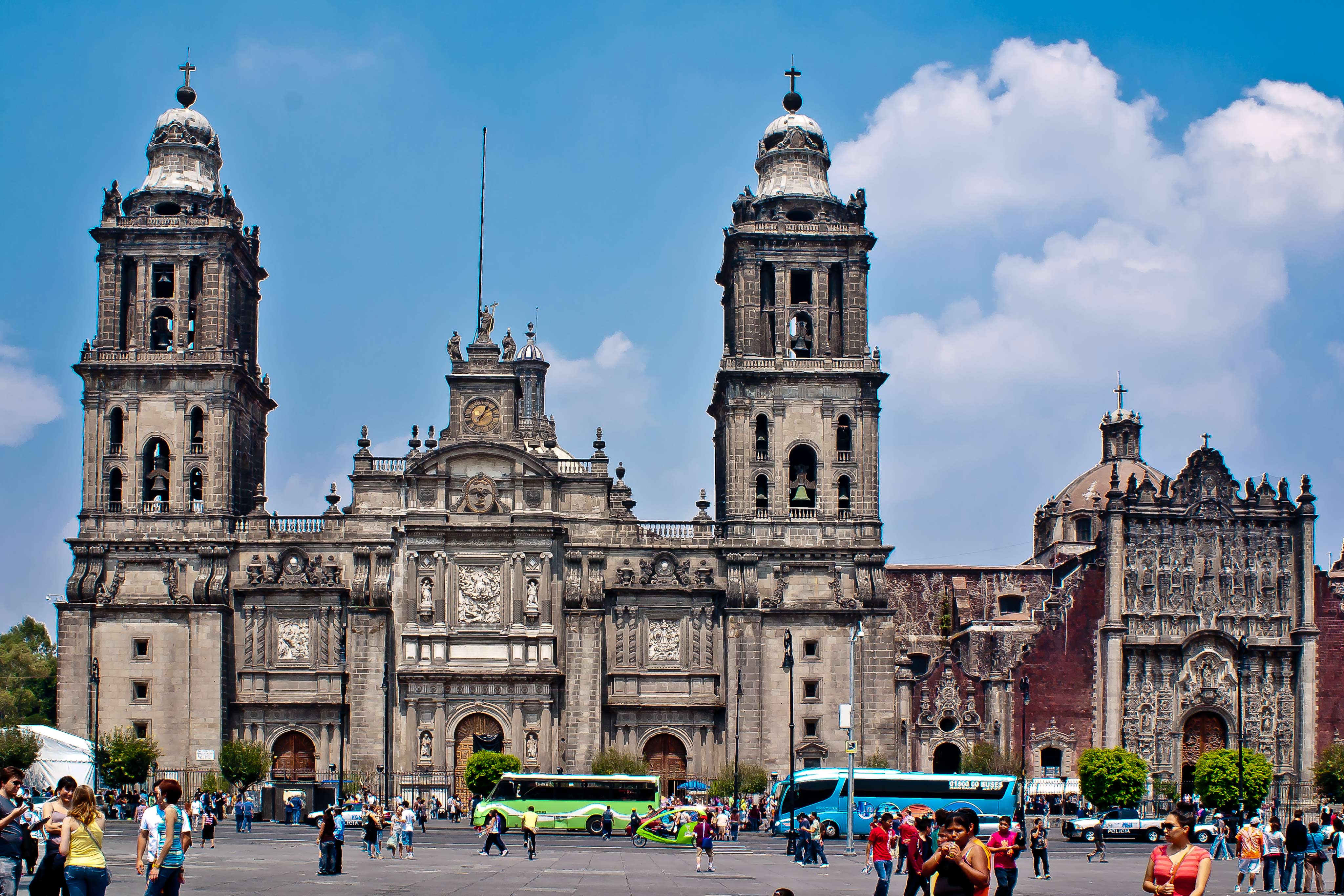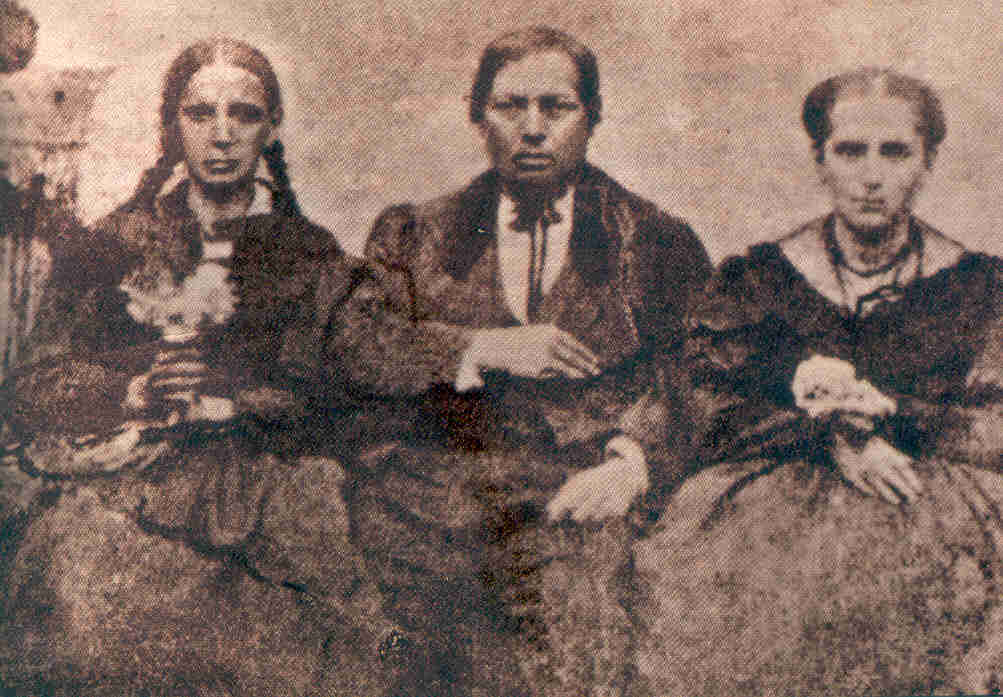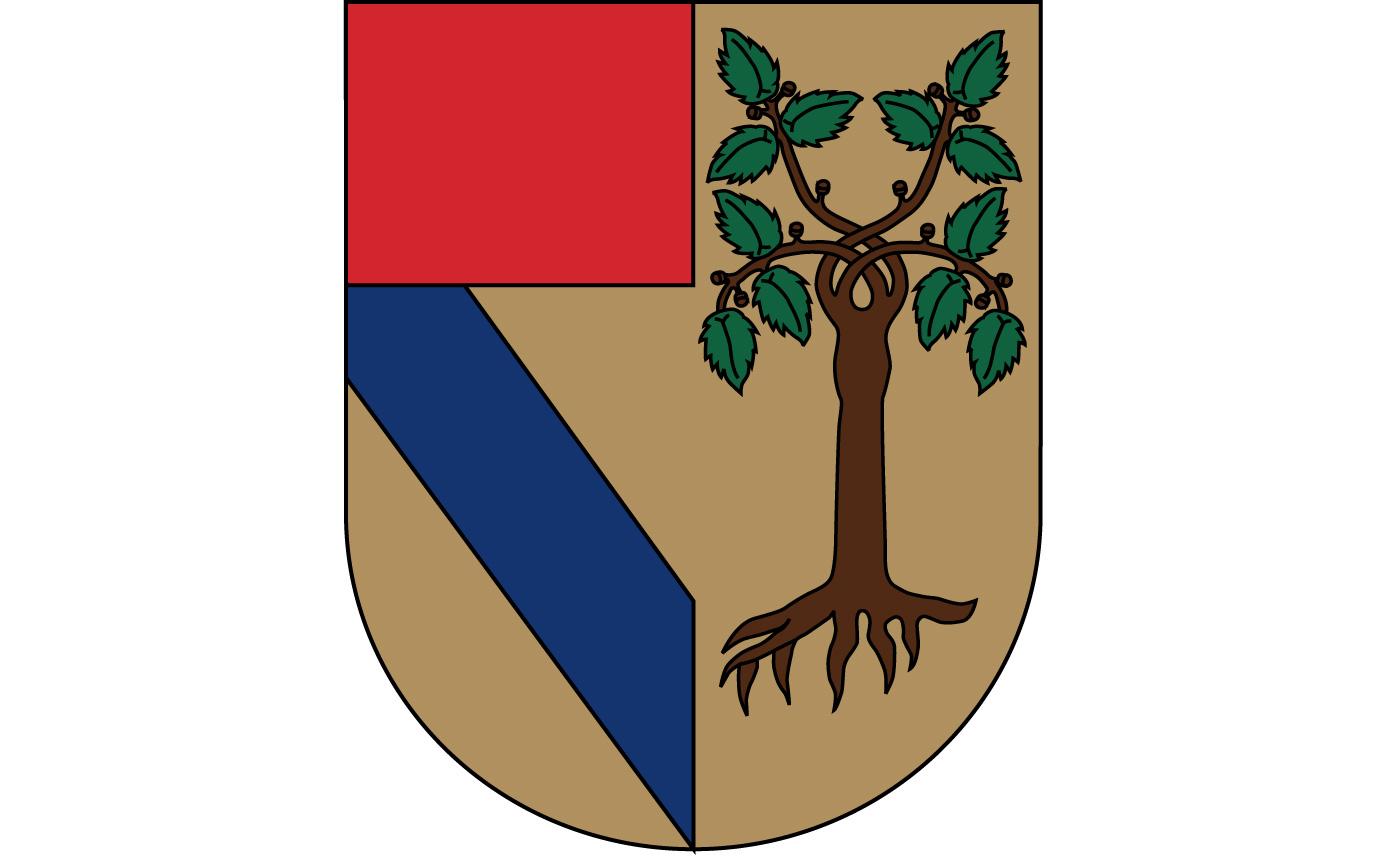|
Pelagio Antonio De Labastida Y Dávalos
Pelagio Antonio de Labastida y Dávalos (March 21, 1816, Zamora, Michoacán — February 4, 1891, Oacalco, Morelos) was a Mexican Roman Catholic prelate, lawyer and doctor of canon law, and politician. He was a member of the imperial regency that invited Maximilian of Austria to accept the throne of Mexico. Career Ecclesiastical career He entered the Seminario Conciliar of Morelia in 1830, where he was later professor and director. His classmates in the seminary included Clemente Murguía, future archbishop of Michoacán, and Melchor Ocampo, future foreign minister of the Republic. Labastida was ordained in 1839. He soon became known as a conservative orator, preaching against all liberal and democratic ideas and against the Freemasons. He was a canon in Morelia in 1854. He opposed the doctrines of liberals Melchor Ocampo and Miguel Lerdo de Tejada from the pulpit, calling them heretical. After the triumph of the Conservatives and on the nomination of Antonio López de S ... [...More Info...] [...Related Items...] OR: [Wikipedia] [Google] [Baidu] |
Roman Catholic Archdiocese Of Mexico
The Archdiocese of Mexico ( la, Archidioecesis Mexicanensis) is a Latin Church ecclesiastical territory or archdiocese of the Catholic Church that is situated in Mexico City, Mexico. It was erected as a diocese on 2 September 1530 and elevated to an archdiocese on 12 February 1546."Archdiocese of México" ''''. David M. Cheney. Retrieved February 29, 2016"Metropolitan Archdiocese of México" ''GCatholic.org''. Gabriel Chow. Retrieved February 29, 2016 The archdiocese is ... [...More Info...] [...Related Items...] OR: [Wikipedia] [Google] [Baidu] |
Antonio López De Santa Anna
Antonio de Padua María Severino López de Santa Anna y Pérez de Lebrón (; 21 February 1794 – 21 June 1876),Callcott, Wilfred H., "Santa Anna, Antonio Lopez De,''Handbook of Texas Online'' Retrieved 18 April 2017. usually known as Santa Anna or López de Santa Anna, was a Mexican politician and general. His influence on post-independence Mexican politics and government in the first half of the nineteenth century is such that historians of Mexico often refer to it as the "Age of Santa Anna". He has been called "the Man of Destiny", "a quintessential '' caudillo'' trongman. Although initially in the post-independence period he identified as a federalist and participated in a coup that ousted the conservatives in 1833, he became increasingly conservative. Elected President in 1833, López de Santa Anna declined to serve and retired to his home state and power base of Veracruz, a pattern that was to repeat itself until his ouster in 1855. López de Santa Anna's military and pol ... [...More Info...] [...Related Items...] OR: [Wikipedia] [Google] [Baidu] |
Conservatism In Mexico
Conservatism in North America is a political philosophy that varies in form, depending on the country and the region, but that has similar themes and goals. Academic study into the differences and similarities between conservatism in North American countries has been undertaken on numerous occasions. Reginald Bibby has asserted that the primary reason that conservatism has been so strong and enduring throughout North America is because of the propagation of religious values from generation to generation. This connection is strongest in mainstream Protestantism in the United States and both Protestantism and Roman Catholicism in Canada. According to Louis Hartz, nations that developed from settler colonies were European "fragments" that froze the class structure and underlying ideology prevalent in the mother country at the time of their foundation. He considered Latin America and French Canada to be fragments of feudal Europe, and the United States and English Canada as liberal fr ... [...More Info...] [...Related Items...] OR: [Wikipedia] [Google] [Baidu] |
List Of Heads Of State Of Mexico
The Head of State of Mexico is the person who controls the executive power in the country. Under the current constitution, this responsibility lies with the President of the United Mexican States, who is head of the supreme executive power of the Mexican Union. Throughout its history, Mexico has had several forms of government. Under the federal constitutions, the title of President was the same as the current one. Under the Seven Laws ( centralist), the chief executive was named ''President of the Republic''. In addition, there have been two periods of monarchical rule, during which the executive was controlled by the Emperor of Mexico. The chronology of the heads of state of Mexico is complicated due to the country's political instability during most of the nineteenth century and early decades of the twentieth century. With few exceptions, most of the Mexican presidents elected during this period did not complete their terms. Until the presidency of Lázaro Cárdenas, each p ... [...More Info...] [...Related Items...] OR: [Wikipedia] [Google] [Baidu] |
Benito Juárez
Benito Pablo Juárez García (; 21 March 1806 – 18 July 1872) was a Mexican liberal politician and lawyer who served as the 26th president of Mexico from 1858 until his death in office in 1872. As a Zapotec, he was the first indigenous president of Mexico and the first indigenous head of state in the postcolonial Americas. Born in Oaxaca to a poor rural family and orphaned as a child, Juárez was looked after by his uncle and eventually moved to Oaxaca City at the age of 12, working as a domestic servant. Aided by a lay Franciscan, he enrolled in a seminary and studied law at the Institute of Sciences and Arts, where he became active in liberal politics. After his appointment as a judge, he married Margarita Maza, a woman of European ancestry from a socially distinguished family in Oaxaca City, and rose to national prominence after the ouster of Antonio López de Santa Anna in the Plan of Ayutla. He participated in La Reforma, a series of liberal measures under the pre ... [...More Info...] [...Related Items...] OR: [Wikipedia] [Google] [Baidu] |
First Vatican Council
The First Ecumenical Council of the Vatican, commonly known as the First Vatican Council or Vatican I was convoked by Pope Pius IX on 29 June 1868, after a period of planning and preparation that began on 6 December 1864. This, the twentieth ecumenical council of the Catholic Church, held three centuries after the Council of Trent, opened on 8 December 1869 and was adjourned on 20 October 1870 after the revolutionary Capture of Rome. Unlike the five earlier general councils held in Rome, which met in the Lateran Basilica and are known as Lateran councils, it met in Saint Peter's Basilica in the Vatican, hence its name. Its best-known decision is its definition of papal infallibility. The council was convoked to respond to the rising influence of rationalism, anarchism, communism, socialism, liberalism, materialism, and pantheism. Its purpose was, besides this, to define the Catholic doctrine concerning the Church of Christ. There was discussion and approval of only two const ... [...More Info...] [...Related Items...] OR: [Wikipedia] [Google] [Baidu] |
Bishop Of Tulancingo
The Roman Catholic Archdiocese of Tulancingo ( la, Archidioecesis Tulancingensis) is an archdiocese of the Latin Rite of the Roman Catholic Church in Mexico. The Archdiocese comprises the province of Hidalgo, and the archiepiscopal see is located in the Mexican city of Tulancingo As a Metropolitan Archdiocese, it is responsible for the suffragan dioceses of Huejutla and Tula. It was elevated as Archdiocese on November 25, 2005. The current archbishop is Domingo Díaz Martínez, who was appointed in 2008. Bishops Ordinaries * Juan Bautista de Ormeachea y Ernáez (1863–1884) * Agustín de Jesús Torres y Hernandez, C.M. (1885–1889) * José María Armas y Rosales (1891–1898) *Maximiano Reynoso y del Corral (1898–1902) * José Mora y del Rio (1901–1907) * José Juan de Jésus Herrera y Piña (1907–1921) * Vicente Castellanos y Núñez (1921–1932) *Luis María Altamirano y Bulnes (1933–1937) *Miguel Darío Miranda y Gómez (1937–1955) *Adalberto Almeid ... [...More Info...] [...Related Items...] OR: [Wikipedia] [Google] [Baidu] |
Juan Bautista De Ormaechea
''Juan'' is a given name, the Spanish and Manx versions of ''John''. It is very common in Spain and in other Spanish-speaking communities around the world and in the Philippines, and also (pronounced differently) in the Isle of Man. In Spanish, the diminutive form (equivalent to ''Johnny'') is , with feminine form (comparable to ''Jane'', ''Joan'', or ''Joanna'') , and feminine diminutive (equivalent to ''Janet'', ''Janey'', ''Joanie'', etc.). Chinese terms * ( or 娟, 隽) 'beautiful, graceful' is a common given name for Chinese women. * () The Chinese character 卷, which in Mandarin is almost homophonic with the characters for the female name, is a division of a traditional Chinese manuscript or book and can be translated as 'fascicle', 'scroll', 'chapter', or 'volume'. Notable people * Juan (footballer, born 1979), Brazilian footballer * Juan (footballer, born 1982), Brazilian footballer * Juan (footballer, born March 2002), Brazilian footballer * Juan (footballer ... [...More Info...] [...Related Items...] OR: [Wikipedia] [Google] [Baidu] |
François Achille Bazaine
François Achille Bazaine (13 February 181123 September 1888) was an officer of the French army. Rising from the ranks, during four decades of distinguished service (including 35 years on campaign) under Louis-Philippe I, Louis-Philippe and then Napoleon III, he held every rank in the army from fusilier to Marshal of France, the latter in 1863. Early life François Achille Bazaine was born at Versailles (city), Versailles, on 13 February 1811, from an affair prior to his father's marriage, with Marie-Madeleine, Josèphe dit Mélanie Vasseur. His father, was General Pierre-Dominique Bazaine, a polytechnic (promotion X1803), meritorious engineer of Napoleon I, and director of the Institute of Communications Channels of the Russian Empire. His elder brother Adolphe Bazaine-Vasseur, Pierre-Dominique Bazaine was a renowned engineer. Achille Bazaine conducted studies at the Institute of Bader (or Barbet), then the college of Saint-Louis. French Foreign Legion & Algeria While n ... [...More Info...] [...Related Items...] OR: [Wikipedia] [Google] [Baidu] |
Council Of Notables
A Council of Notables is a political body comprising persons of note in a community who are chosen by the governing authority in the region for their special knowledge, experience, skills, status or accomplishments. Such councils have existed in many regions and countries throughout the world. "Whether in village, province, or capital, there is, a conclave of local authorities of whose opinion the ruler — be it conqueror, governor, or sovereign — is bound to take account, though he is not bound to obey their decisions." A Council of Notables was one of many political bodies established by the French in colonial Cameroun between the First and Second World Wars. Each of the colony's nine administrative areas had its own Council. These local government institutions comprised the people whom the French deemed to be the elite of the region. The colonial commissioner chose the members of each council from lists supplied by local officials.Ngoh 133. By establishing these bodies, t ... [...More Info...] [...Related Items...] OR: [Wikipedia] [Google] [Baidu] |
Archbishop Of Mexico
The Archdiocese of Mexico ( la, Archidioecesis Mexicanensis) is a Latin Church ecclesiastical territory or archdiocese of the Catholic Church that is situated in Mexico City, Mexico. It was erected as a diocese on 2 September 1530 and elevated to an archdiocese on 12 February 1546."Archdiocese of México" ''''. David M. Cheney. Retrieved February 29, 2016"Metropolitan Archdiocese of México" ''GCatholic.org''. Gabriel Chow. Retrieved February 29, 2016 The archdiocese is ... [...More Info...] [...Related Items...] OR: [Wikipedia] [Google] [Baidu] |
Pope Pius IX
Pope Pius IX ( it, Pio IX, ''Pio Nono''; born Giovanni Maria Mastai Ferretti; 13 May 1792 – 7 February 1878) was head of the Catholic Church from 1846 to 1878, the longest verified papal reign. He was notable for convoking the First Vatican Council in 1868 and for permanently losing control of the Papal States in 1870 to the Kingdom of Italy. Thereafter he refused to leave Vatican City, declaring himself a " prisoner of the Vatican". At the time of his election, he was seen as a champion of liberalism and reform, but the Revolutions of 1848 decisively reversed his policies. Upon the assassination of his Prime Minister Rossi, Pius escaped Rome and excommunicated all participants in the short-lived Roman Republic. After its suppression by the French army and his return in 1850, his policies and doctrinal pronouncements became increasingly conservative, seeking to stem the revolutionary tide. In his 1849 encyclical '' Ubi primum'', he emphasized Mary's role in salvation. In 1 ... [...More Info...] [...Related Items...] OR: [Wikipedia] [Google] [Baidu] |






